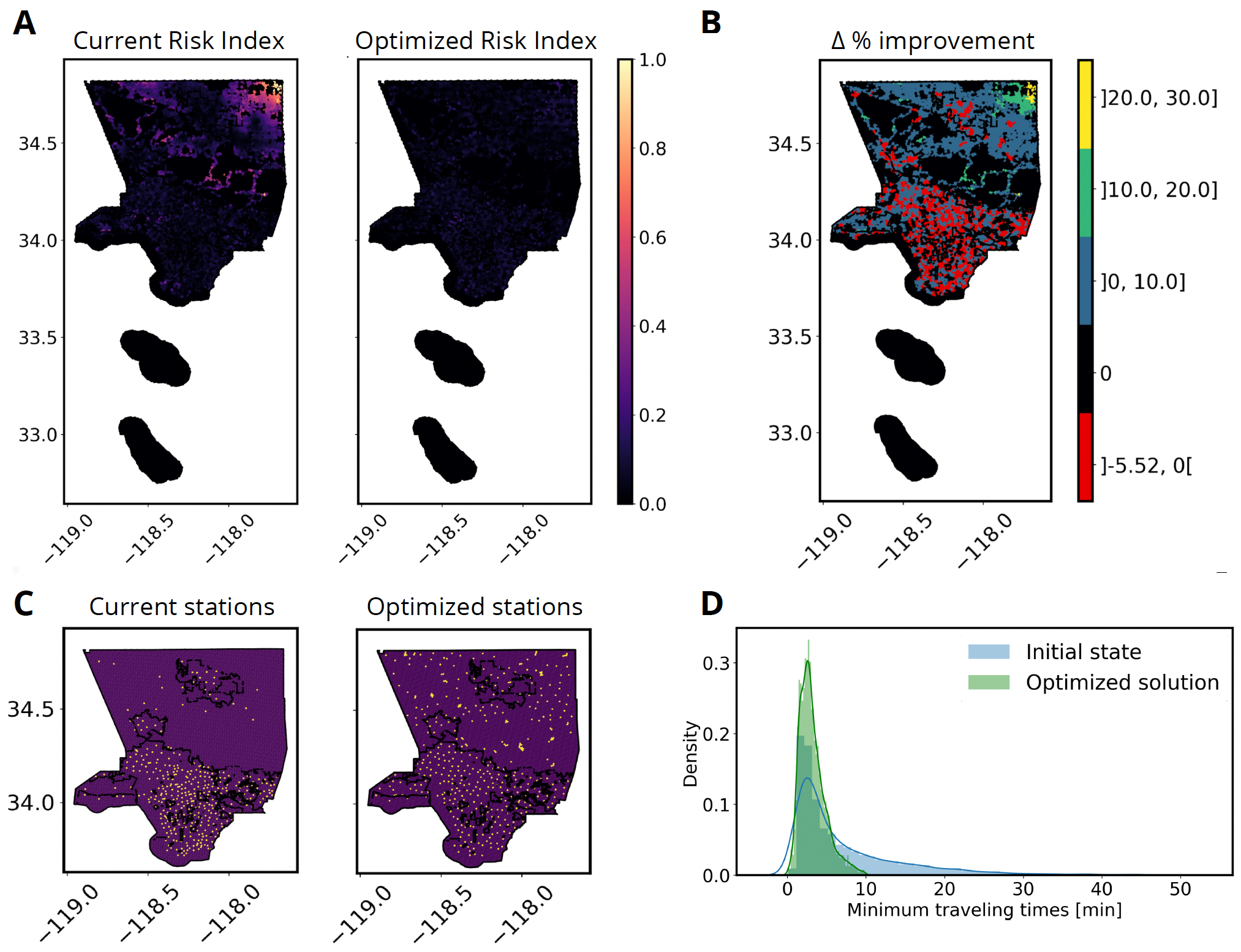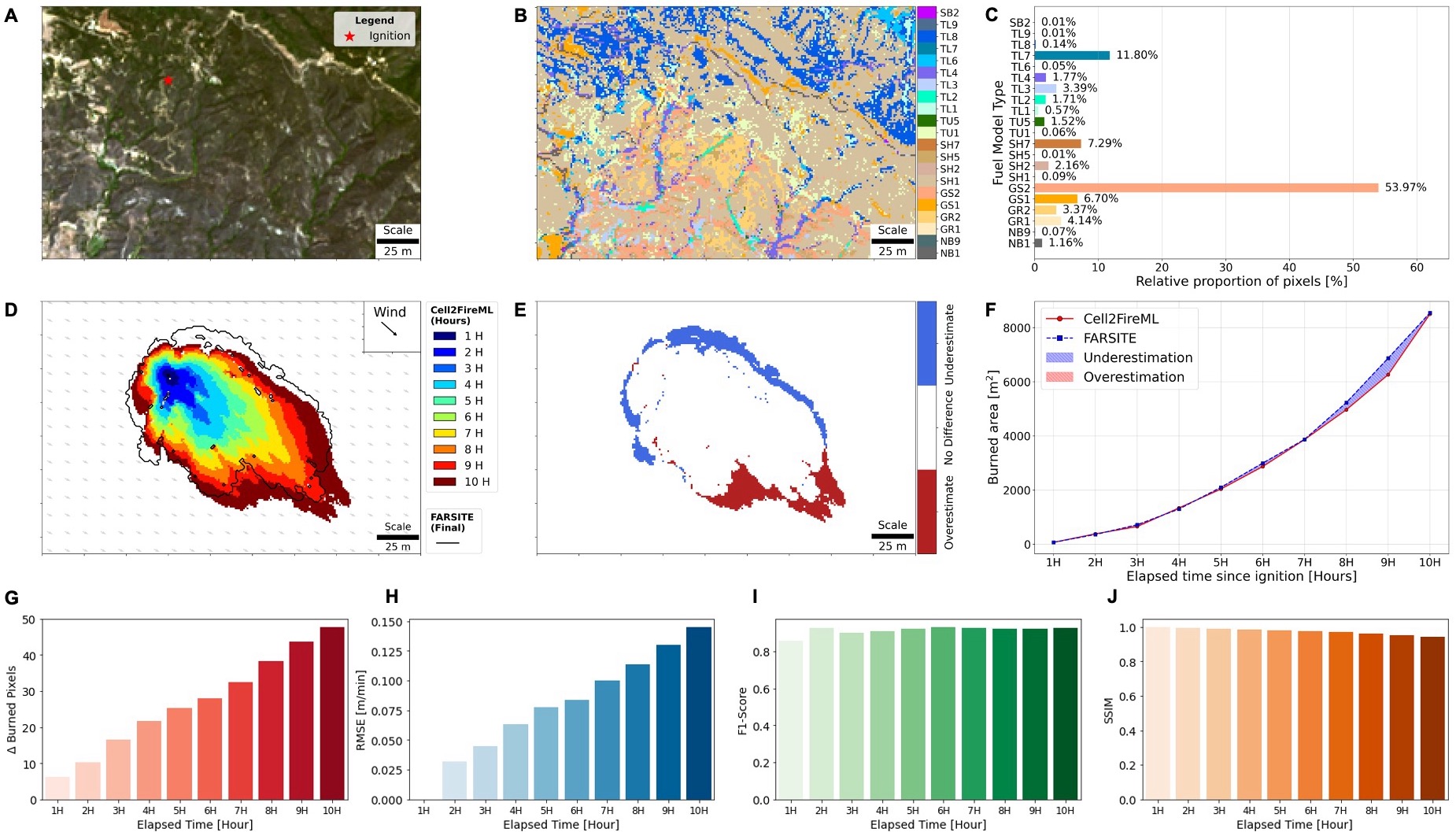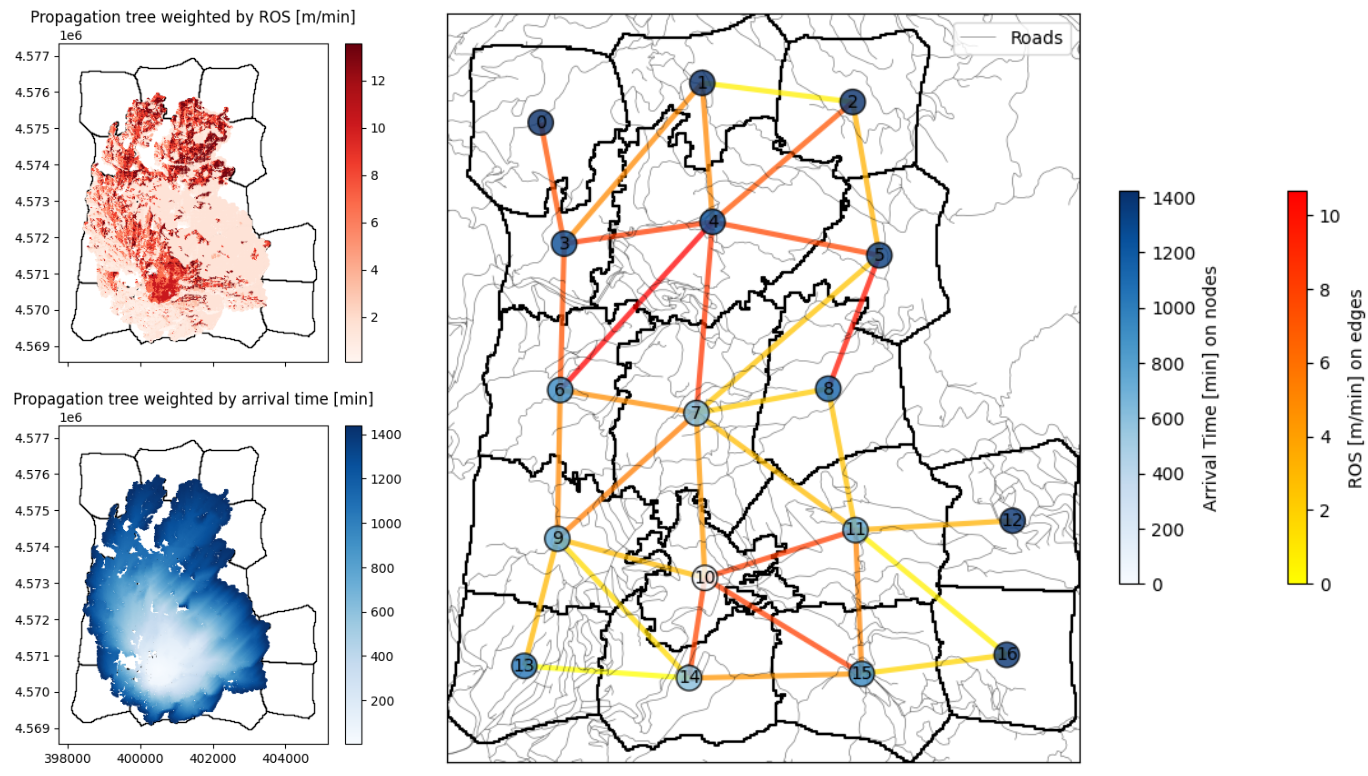Research Members: Minho Kim, Cristobal Pais
Climate change has exacerbated fire-conducive weather conditions, while urbanization and fuel accumulation from decades of fire exclusion have exposed our communities and environments to a greater risk of catastrophic wildfires. Through our research, we seek to develop comprehensive wildfire protection systems and understand wildfire behavior and risk to better plan against current and future catastrophic disasters. We do this not by responding to emergencies but by supporting proactive strategic planning and policy development where the focus is on reducing the intensity and rate of spread of a wildfire. If this goal is achieved, first responders can safely contain ignitions, minimize damage to infrastructure, and hopefully save lives. To that end we bring expertise from Environmental Planning, and Operations Research, brought together through the lens of Complex Systems Science and vast experience in applications of AI.

Ongoing Research Topics
Natural hazards risk management is a demanding interdisciplinary task. It requires domain knowledge, integration of robust computational methods, and effective use of complex datasets. However, existing solutions tend to focus on specific aspects, data, or methods, limiting their impact and applicability. We developed a general data-driven framework to support risk assessment and policy making illustrating its usage in the context of fire hazard by integrating three unique datasets of fire behavior, street network, and census data for the whole state of California. We show that the coupling of environmental simulation and economic characteristics with optimization methods is necessary to properly unveil hazard risks, suggest mitigation approaches, and analyze the trade-offs involved. These results open avenues for the future development of flexible interdisciplinary frameworks in natural hazards management using complex large-scale data.

With the escalating global impact of wildfires, operational fire simulation models have become crucial in real-time fire management. However, existing models are typically provided as closed-box systems and for specific geographic regions. In response, we developed an open-source fire spread simulation framework that trains semi-empirical fire behavior model output data using machine learning and provides the learned logic into a cellular automata simulator to simulate fire spread. Further, we also assessed the feature importance of the trained model’s inputs and predictions to make the framework more explainable. Through simulations on synthetic and real landscapes in various geographic regions (U.S., Canada, Chile), we demonstrated that Cell2FireML can produce highly accurate simulation outputs that are comparable with the best existing operational models. We also added a two-step optimization process that leverages real wildfire burn data to simulate more realistic simulations and surpass capabilities of existing models.

Fire suppression needs proactive strategies for firefighters to plan ahead and mitigate damage. Current suppression approaches are often reactive and defensive, allowing the fire to spread uncontrollably as we wait for the flames to reach us, which might be too late for effective firefighting. To address this, we developed an automatic and scalable decision-making support simulator using a weighted network created with segmented landscapes exhibiting homogeneous fire behavior (derived from fire spread simulations) that identifies high-risk connections and generates optimal suppression strategies.

Publications
Minho Kim, Marc Castellnou, Marta C. González. Modeling Fire Potential Networks for Suppression Strategies.
Minho Kim, Cristobal Pais, Marta C. González. Fire Spread Simulations Using Cell2Fire on Synthetic and Real Landscapes. (In Review)
Cristobal Pais, Minho Kim, John Radke, Marta C. González. An interdisciplinary data-science approach to managing natural hazards risk”. ArXiv (2024). [PDF]
Pais, C., Gonzalez-Olabarria, J. R., Elimbi Moudio, P., Garcia-Gonzalo, J., González, M. C., & Shen, Z. J. M. (2023). Global scale coupling of pyromes and fire regimes. Communications Earth & Environment, 4(1), 267. [Paper][PDF][Supplementary]
